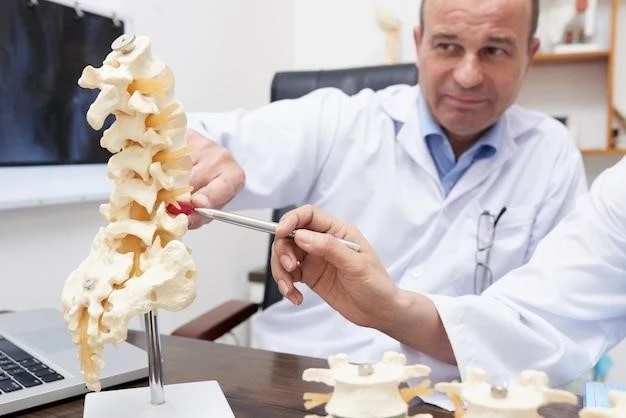Introduction
The introduction to Spondylometaphyseal Dysplasia includes information on various types‚ such as SMDCF‚ Kozlowski type‚ Schmidt type‚ and Sedaghatian type. These types are characterized by skeletal abnormalities affecting bone growth and development.
Definition of Spondylometaphyseal Dysplasia
Spondylometaphyseal Dysplasia is a group of genetic skeletal disorders characterized by abnormalities affecting bone growth and development. The different types include SMDCF‚ Kozlowski type‚ Schmidt type‚ and Sedaghatian type‚ each presenting distinctive skeletal abnormalities and radiographic features.
Types and Characteristics
Spondylometaphyseal dysplasia includes various types such as SMDCF‚ Kozlowski type‚ Schmidt type‚ and Sedaghatian type. Each type is characterized by distinct skeletal abnormalities and radiographic features affecting bone growth and development.
a. Corner Fracture Type (SMDCF)
Spondylometaphyseal Dysplasia‚ corner fracture type (SMDCF)‚ is characterized by short stature and waddling gait in early childhood. Radiographic features include enlargement and corner fracture-like lesions in the metaphyses‚ affecting bone growth.
b. Kozlowski Type
Spondylometaphyseal dysplasia‚ Kozlowski type is a specific skeletal disorder characterized by short stature involving the trunk area. It is inherited as an autosomal dominant trait‚ typically becoming apparent in early childhood with distinct skeletal abnormalities. Radiographic findings include metaphyseal irregularities and varying degrees of platyspondyly‚ highlighting the unique features of this type.
c. Schmidt Type
Spondylometaphyseal dysplasia‚ Schmidt type‚ is a specific genetic skeletal disorder characterized by mutations causing pathogenic variants. These mutations can be hereditary or occur randomly‚ impacting bone growth and development. The condition is known for its distinctive radiographic changes and genetic etiology.
d. Sedaghatian Type
Spondylometaphyseal dysplasia‚ Sedaghatian type is a rare and severe form of the condition. It presents with severe metaphyseal chondrodysplasia‚ mild upper limb shortness‚ and mild platyspondyly. This specific type is neonatal lethal and is characterized by unique radiographic and clinical features‚ distinguishing it from other forms of spondylometaphyseal dysplasia.
Clinical Features
The clinical features of Spondylometaphyseal Dysplasia encompass short stature‚ waddling gait‚ spinal‚ and limb abnormalities. These characteristic clinical manifestations aid in the diagnosis and management of the condition.
a. Short Stature and Waddling Gait
Spondylometaphyseal dysplasia is associated with short stature and a distinctive waddling gait‚ often noticeable from early childhood. Short limbs‚ short trunk‚ and abnormalities in bone growth contribute to these clinical features‚ aiding in the diagnosis of the condition.
b. Spinal and Limb Abnormalities
The clinical features of Spondylometaphyseal Dysplasia include abnormalities in the spine and limbs. These abnormalities manifest as short limbs‚ short trunk‚ and deviations in bone growth‚ emphasizing the skeletal impact of the condition.
Radiographic Features
Radiographic features of Spondylometaphyseal Dysplasia include metaphyseal irregularities and platyspondyly‚ highlighting skeletal abnormalities affecting bone growth.
a. Metaphyseal Irregularities
Spondylometaphyseal Dysplasia is characterized by metaphyseal irregularities in the long bones. These irregularities are evident on radiographic imaging and contribute to the skeletal abnormalities observed in individuals with this condition.
b. Platyspondyly
Spondylometaphyseal dysplasia often presents with platyspondyly‚ a radiographic feature characterized by flattened vertebrae. Platyspondyly is a key radiological finding in individuals with this condition‚ reflecting the structural abnormalities affecting spine development.
Genetic Inheritance
Details on the genetic inheritance patterns of Spondylometaphyseal Dysplasia are essential to understand the condition’s hereditary aspects and the role of specific genetic mutations in its development.
a. Autosomal Dominant vs. X-Linked Recessive
The differentiation between autosomal dominant and X-linked recessive inheritance patterns in Spondylometaphyseal Dysplasia is crucial for understanding the genetic basis of the condition and its transmission within families.
b. Role of Type 2 Collagen Defect
In Spondylometaphyseal Dysplasia‚ Type 2 collagen defects play a pivotal role in the pathogenesis of the condition. These defects involve abnormalities in the synthesis of collagen‚ a crucial structural protein contributing to bone formation and growth.
Incidence and Epidemiology
Exploring the incidence and epidemiology of Spondylometaphyseal Dysplasia provides insights into the prevalence of the condition and its comparison with other skeletal dysplasias‚ aiding in understanding its impact on affected individuals.
a. Prevalence of Spondylometaphyseal Dysplasia
The prevalence of Spondylometaphyseal Dysplasia is crucial in understanding the frequency of this genetic skeletal disorder compared to other similar conditions. Analyzing the prevalence provides valuable epidemiological data for researchers and healthcare professionals.
Comparing Spondylometaphyseal Dysplasia with other skeletal dysplasias provides valuable insights into the unique characteristics and distinguishing features of this genetic disorder within the spectrum of similar skeletal conditions.
Diagnosis and Differential Diagnosis
The diagnostic process for Spondylometaphyseal Dysplasia involves clinical evaluation and radiological imaging to assess skeletal abnormalities and distinguish the condition from other similar genetic skeletal disorders.
b. Comparison with Other Skeletal Dysplasias
Comparing Spondylometaphyseal Dysplasia with other skeletal dysplasias provides insights into the unique characteristics and distinguishing features of this genetic disorder within the spectrum of similar skeletal conditions.
b. Radiological Imaging
Radiological imaging plays a vital role in diagnosing Spondylometaphyseal Dysplasia. It helps visualize metaphyseal irregularities and platyspondyly‚ aiding in the identification and assessment of skeletal abnormalities associated with this condition.
Management and Treatment
The management of Spondylometaphyseal Dysplasia typically involves a multidisciplinary approach to address the skeletal abnormalities and associated symptoms. Surgical interventions may be considered in severe cases to improve functional outcomes and quality of life.
a. Multidisciplinary Approach
A multidisciplinary approach is crucial in managing Spondylometaphyseal Dysplasia. This comprehensive strategy involves the coordination of various medical specialists to address the complex skeletal abnormalities and optimize patient care.
b. Surgical Interventions
In severe cases of Spondylometaphyseal Dysplasia‚ surgical interventions may be recommended to address skeletal abnormalities and improve functional outcomes. These interventions aim to enhance the quality of life for individuals affected by this genetic disorder.
Exploring current research findings and clinical trials provide valuable insights into the advancements and future directions in understanding and managing Spondylometaphyseal Dysplasia‚ offering hope for improved outcomes and treatment strategies.

Research and Studies
Investigating current research findings and clinical trials offer valuable insights into the advancements and future directions in understanding and managing Spondylometaphyseal Dysplasia‚ contributing to ongoing progress in the field of skeletal disorders.
b. Clinical Trials and Future Directions
Exploring clinical trials and future directions in research for Spondylometaphyseal Dysplasia offers insights into innovative treatment approaches and potential advancements in managing this genetic skeletal disorder‚ paving the way for improved patient outcomes.
Prognosis and Long-Term Outlook
Evaluating the prognosis and long-term outlook for individuals with Spondylometaphyseal Dysplasia is essential in determining the potential impact on their quality of life and identifying the need for ongoing monitoring and follow-up care.
a. Impact on Quality of Life
Understanding the impact of Spondylometaphyseal Dysplasia on the quality of life is essential for addressing the physical and emotional challenges individuals may face due to skeletal abnormalities. By assessing the overall impact‚ healthcare providers can offer comprehensive support and enhance the well-being of affected individuals.
b. Monitoring and Follow-Up Care
Implementing an effective strategy for monitoring and follow-up care is essential in managing individuals with Spondylometaphyseal Dysplasia. Regular assessments and follow-up appointments allow healthcare providers to track disease progression‚ address any emerging issues‚ and optimize the long-term management of the condition.

Support Groups and Resources
Accessing patient organizations and online communities dedicated to Spondylometaphyseal Dysplasia offers valuable support and resources for individuals affected by the condition‚ providing a platform for sharing experiences‚ receiving guidance‚ and fostering a sense of community.
Exploring online communities specific to Spondylometaphyseal Dysplasia provides a platform for individuals and families to connect‚ share experiences‚ access information‚ and receive support from a wider network of individuals navigating similar challenges.
b. Online Communities
Accessing online communities dedicated to providing support and resources for individuals affected by Spondylometaphyseal Dysplasia can offer a sense of camaraderie‚ shared experiences‚ and valuable information for navigating the challenges associated with the condition.
Case Studies and Reports
Exploring case studies and reports of individuals with Spondylometaphyseal Dysplasia provides valuable insights into the clinical manifestations‚ treatment approaches‚ and outcomes associated with this genetic skeletal disorder‚ enriching our understanding of the condition’s complexities.
a. Patient Organizations
Engaging with patient organizations dedicated to Spondylometaphyseal Dysplasia provides individuals and families with valuable support‚ resources‚ and a network of individuals sharing similar experiences‚ fostering a sense of community and empowerment.
b. Lessons Learned from Clinical Experiences
Clinical experiences have provided valuable insights and lessons in the management of Spondylometaphyseal Dysplasia. These experiences contribute to refining diagnostic approaches‚ optimizing treatment strategies‚ and enhancing the overall care for individuals with this condition.
Challenges and Complications
Spondylometaphyseal Dysplasia presents challenges such as skeletal abnormalities affecting bone growth‚ as well as potential complications related to spinal and limb deformities. Understanding these challenges is crucial for effective management and care.
a. Orthopedic Issues
Orthopedic issues are common in individuals with Spondylometaphyseal Dysplasia‚ impacting bone development and potentially leading to spinal and limb deformities. Monitoring and managing these orthopedic challenges are essential for improving quality of life and functional outcomes.
b. Respiratory and Cardiovascular Implications
Spondylometaphyseal Dysplasia may have implications on the respiratory and cardiovascular systems due to the skeletal abnormalities. Respiratory function may be impacted by thoracic cage deformities‚ while cardiovascular health may be influenced by spinal abnormalities. Monitoring and addressing these implications is essential for comprehensive care.
Conclusion
In conclusion‚ understanding the complexities of Spondylometaphyseal Dysplasia is essential for effective management and care. Addressing challenges and complications associated with this genetic skeletal disorder requires a multidisciplinary approach‚ emphasizing the importance of early diagnosis‚ appropriate treatment strategies‚ and ongoing support for individuals affected by the condition.
Summary of Key Points on Spondylometaphyseal Dysplasia
Spondylometaphyseal Dysplasia encompasses a spectrum of skeletal abnormalities affecting bone growth and development. Common features include short trunk dwarfism‚ metaphyseal irregularities‚ and characteristic radiographic findings. Genetic mutations‚ varying inheritance patterns‚ and clinical manifestations contribute to the complexity of the condition‚ emphasizing the importance of multidisciplinary management and ongoing support for affected individuals. Research advances and clinical experiences continually enhance our understanding and care strategies for this rare genetic disorder.
